Courtney Warren is a Texas-based interior designer whose work has been featured in Real Simple, Better Homes & Gardens, Good Housekeeping, Apartment Therapy, and Today.com. She is a frequent consultant on Fox 4 TV’s Good Day program in Dallas, was ranked in the top 3 percent of interior designers in the US by Houzz.com, and starred in the Dallas episode of TLC’sFour Houses. She delights in helping overwhelmed clients create beautiful spaces—and will never turn down a warm chocolate chip cookie or Diet Dr Pepper.
Shop the projects
My Go-To design accessories
Spare Room to School Room in 10 Steps
Recently, with school closures across the US and so much uncertainty on whether our children will return to in-school learning, many parents with school-age children found themselves scrambling to facilitate their children’s virtual learning. With parental superpowers activated, most of us stepped up to the challenge and created temporary learning spaces on the fly.
So, what if we must continue distance learning with our kids through the fall? We’ll need to set up dedicated spaces for the long term that are organized, comfortable, upbeat, and learning-centric. To that end, we suggest parents spend part of August getting their homes ready for the start of the 2020/2021 school year.
Below we’ve laid out ten ways to help you create the most optimal distance learning classroom within your home. You’ll be able to adapt these points to suit your home, fit into your budget, and be age-appropriate for your children, whether they’re starting kindergarten or finishing their last year of high school. No matter whether you are an expert homeschooler, or one born recently out of necessity, you’re sure to find these tips will help you create the ultimate home learning center! You’ll no doubt discover points to add to this list to personalize it.
- Plan
A detailed plan can provide a roadmap to help you reach your goal of creating a visually pleasing yet practical, distance learning space. Your plan should include colors for walls and furnishings, the layout for the room (where each piece of furniture will be placed,) and how many designated areas you need to fit into the room to make the space functional.
When formulating your plan, you will be able to determine what pieces of furniture, equipment, and supplies you already have and what you still need to purchase. Think desks, tables, chairs, computers, and a printer and scanner. And don’t forget the extra elements that make the room unique to you and your children.
- Pick a Space with Lots of Natural Light & Room to MoveAn optimal space would be filled with light and provide plenty of room to move around. Alas, we don’t all have a sizable, light-filled room to dedicate to schooling from home. If you don’t have a space with lots of light streaming in, be sure you add lighting fixtures that offer ample light for reading, working on the computer, and paper. Room lighting from ceiling fixtures and task lighting is essential to avoiding eyestrain and emotional fatigue.As to space, if it’s less than optimal, arrange furniture to make the room feel larger and take advantage of all available space. Your aim should be to provide an area in which your children can thrive while adapting to distance learning for as long as necessary.
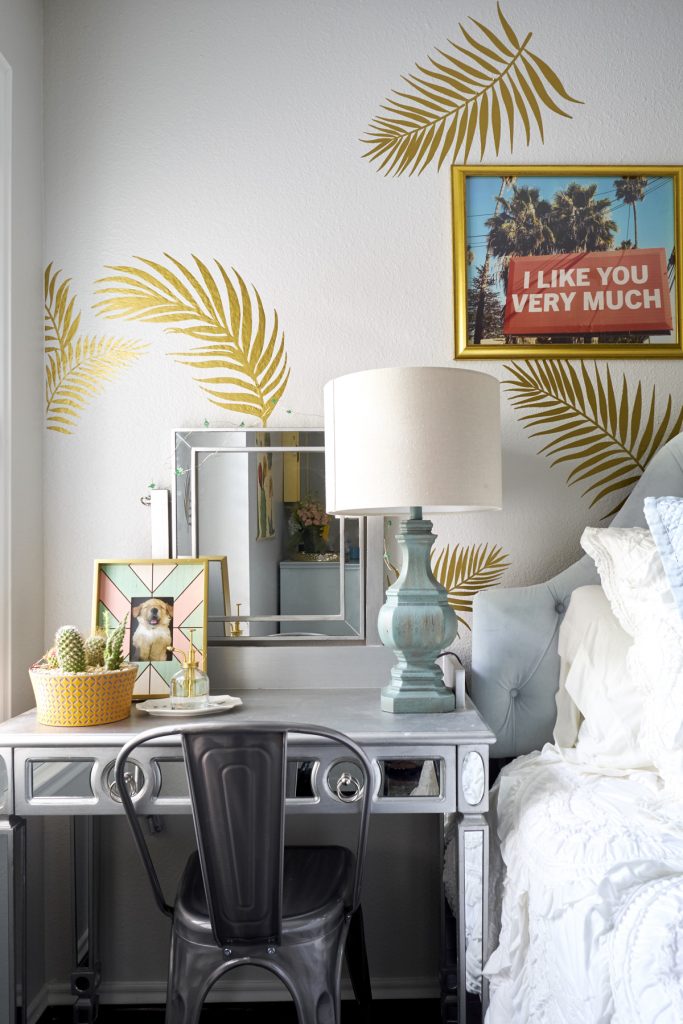
- Get the Kids InvolvedA successful distance learning space will involve input from the whole family. Some elements are non-negotiable, but others should be open to individual choice. Be open to input on the small things, so they understand your decisions on the big things. Think appropriate furniture size vs. paper or pencil color.Make sure every family member knows his or her ideas are important to you, and some, but likely not all, will become part of the learning space. Input from everyone will make the room better and collaborating on the project will be a great learning experience.If possible, create a space, even if it’s tiny, for each child to call their own, something that’s theirs alone. Consider adding a desk space to their bedroom – like we did for this client pictured above. This was space that could hold fun trinkets or partner as a secluded work station for privacy in the comfort of their own room. Or perhaps something like their homeroom desk at their brick and mortar school. Everyone needs their very own spot, no matter its size.
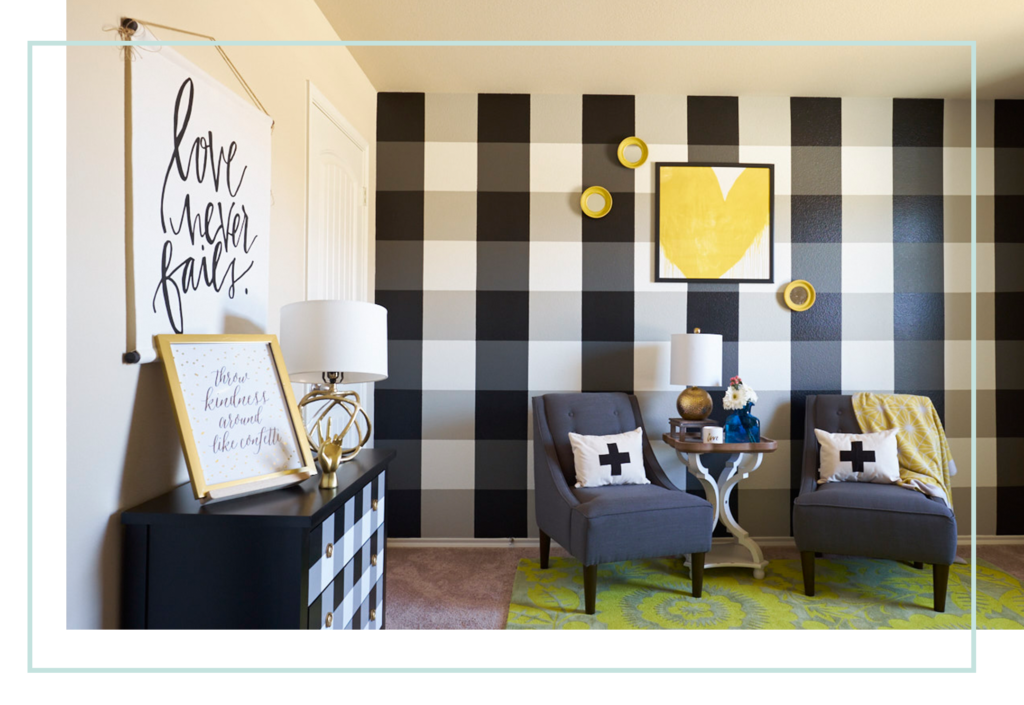
- Choose the Right Furniture Make certain tables, desks and chairs are suitable for the child who will be using them and be sure to change desks and chairs out as they outgrow them–check often since kids are prone to sudden growth spurts.Pay close attention to ergonomics so your students, no matter their age, will be comfortable and can work safely. Don’t forget shelves for books and easily accessible storage for extra supplies so you won’t have to wait for next-day delivery of paper and such.
- Accommodate Online & Offline Work Be sure to include dedicated areas for computer use and offline activities. Within those individual areas, include all the equipment and supplies that are needed for that activity. Remember to add extra lighting as needed.
- Create Workstations for Different Activities Be sure workstations that require electricity are placed near wall outlets. If extension cords must be used, be sure they’re added safely and aren’t an impediment to moving around.
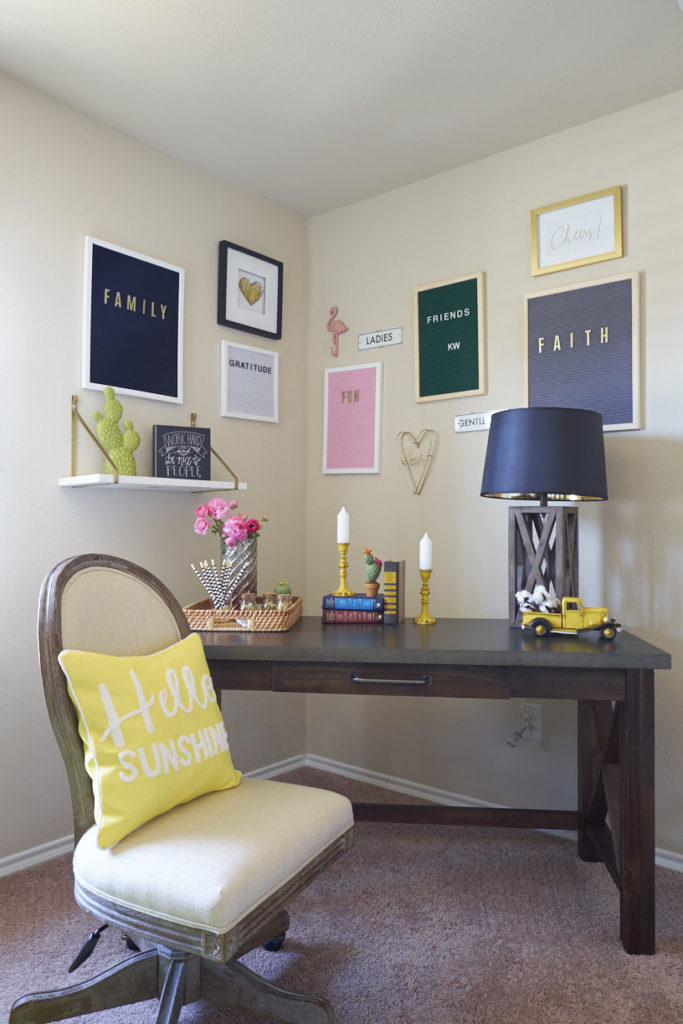
- Decorate with Upbeat Colors & Elements We’re adding a word about aesthetics here. Color is essential to a learning environment. Bright, happy colors are often seen in classrooms for a reason.Also, add posters that represent different subject matters, like mathematics and grammar. Motivational posters suited to the age of your children can also be appropriate, keeping in tip number eight below. What’s distracting to one child, may encourage creativity in another.
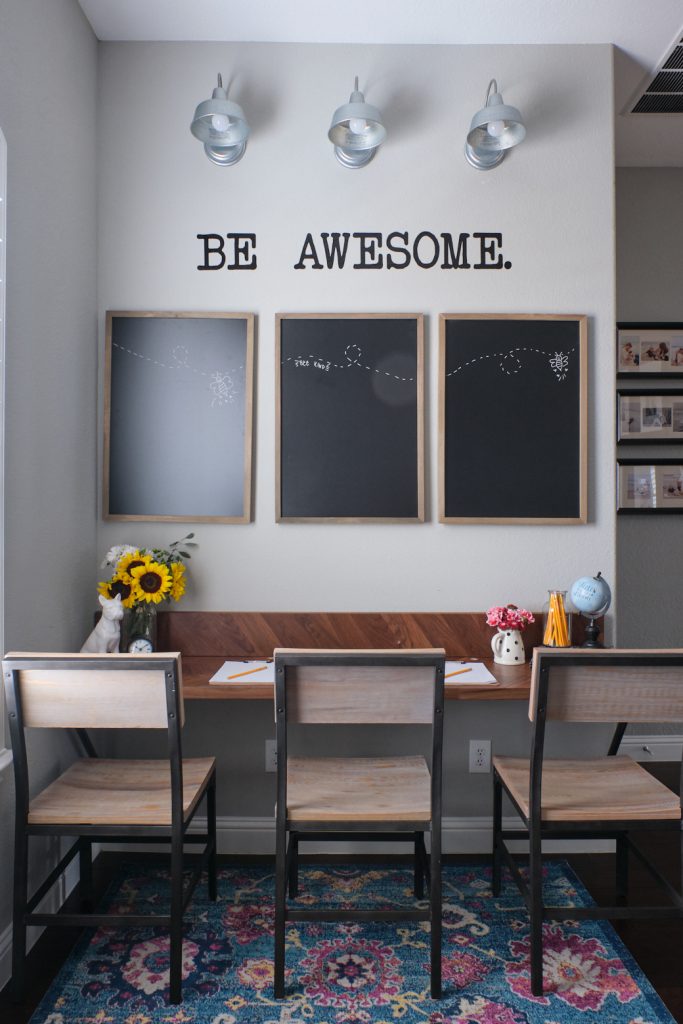
- Eliminate Distractions If there is likely to be a lot of activity nearby, a door that can be closed will help. Working and doing schoolwork at home can sometimes be chaotic from the sheer number of people going about different activities, so be creative and do the best you can to help your children focus. With this client, we designed a fun space, secluded from distractions, with chalkboard-learning or after-school doodling.
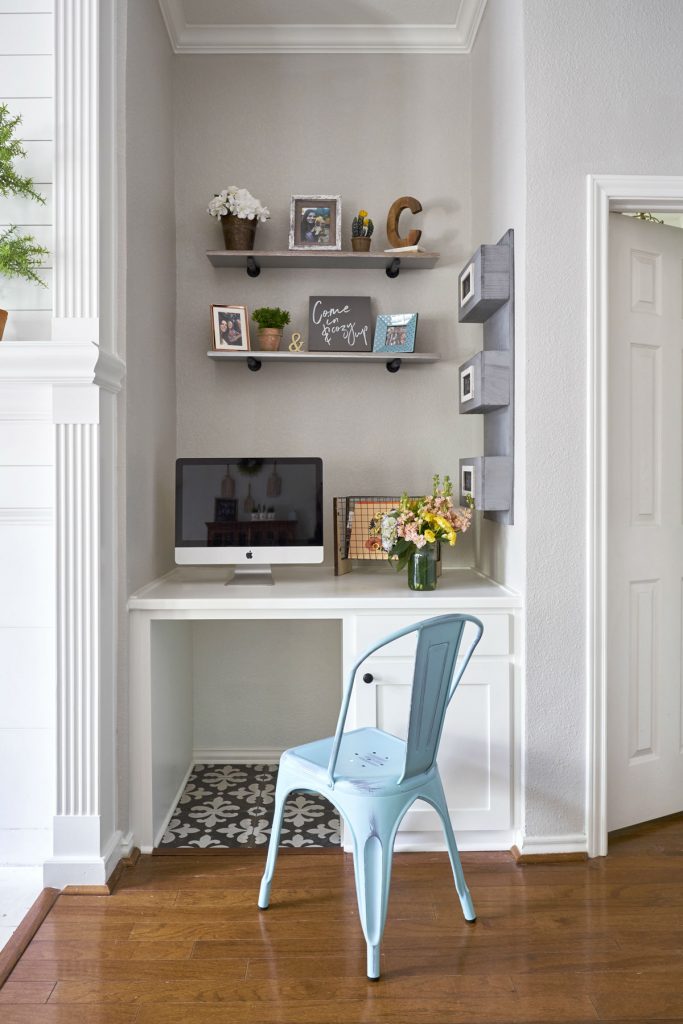
- Make It Comfortable but Not “Too” Comfortable Your goal should be to create a comfortable “work” environment for your children, but not so comfortable as to encourage daydreaming or napping. Speaking of naps, if your child is still young enough to need a rest period mid-morning or afternoon, you’ll probably want to have them rest in their bedrooms rather than taking a nap in a sleeping bag on the floor so that your schoolroom is reserved for learning only. Psychologically, this should be a good move.Also, when it comes to break time (known as recess in regular school days), send children to another room in the house or outside for some fresh air and exercise. This will again reinforce the idea that the learning space is reserved for learning activities.
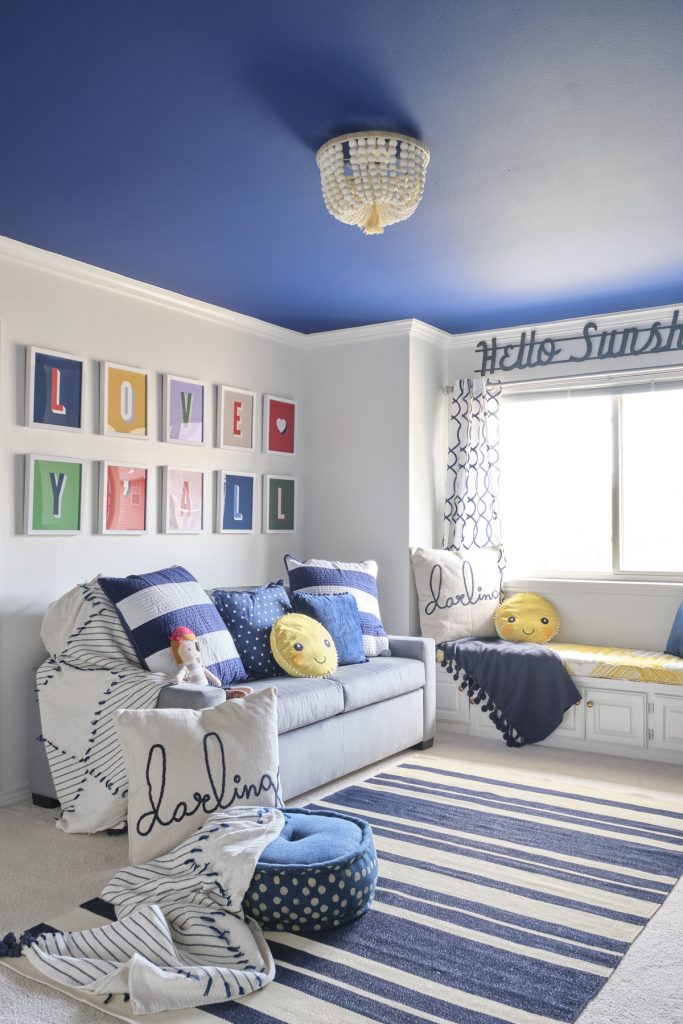
- Don’t Forget to Make a Space for Yourself You can expect to spend a lot of time in your kid’s new learning space, especially in the beginning, as you and your children adjust to this new way of learning. Creating your own personal area within your students’ distance learning space should work well for you and your students. Don’t you love how we designed this room? We created a gender neutral, naturally bright and well-lighted area perfect for lounging after a long day or doubling as a reading nook for quiet learning activities as a family.Perhaps a desk and ergonomic chair will emphasize your new role as a teacher or learning enabler. Still, a comfortable sofa (if you have room) loveseat or lounge chair will allow for much-needed change as you spend hours overseeing the learning process. An appealing area rug, coffee table, or side table and a few decorative accessories could complete the space beautifully.
We hope this helped you get a big head start on the upcoming school year if or as you begin a new adventure in distance learning. You’ll save time and eliminate an enormous amount of stress and frustration for you and your children by having a pleasant and functional space in place, ready to begin to study as soon as your school provides access to their plan for classes in the fall. Enjoy this new normal! Ready! Set! Go!